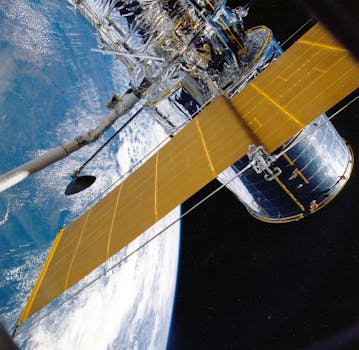The Rise of Mega-Constellations: Latest Updates in Satellite Telecommunications

The Rise of Mega-Constellations: Latest Updates in Satellite Telecommunications
The Rise of Mega-Constellations is a significant development in the field of satellite telecommunications, with several companies launching thousands of satellites into low Earth orbit to provide global internet coverage. This phenomenon has the potential to revolutionize the way we communicate and access information, and it is essential to stay updated on the latest developments in this field.
Mega-constellations are a type of satellite constellation that consists of a large number of satellites, typically in the thousands, that are launched into low Earth orbit. These satellites are designed to provide global internet coverage, and they have the potential to bring high-speed internet access to remote and underserved areas around the world. The companies that are leading the charge in the development of mega-constellations include SpaceX, Amazon, and OneWeb, among others.
How Mega-Constellations Work
Mega-constellations work by launching a large number of satellites into low Earth orbit, where they can provide internet coverage to a wide area. Each satellite is equipped with a high-gain antenna that allows it to communicate with other satellites and with ground stations. The satellites use a variety of technologies, including Ka-band and Ku-band frequencies, to provide high-speed internet access to users. The signals are transmitted from the satellites to ground stations, where they are then routed to the internet.
The use of low Earth orbit for mega-constellations has several advantages, including lower latency and higher bandwidth. Low Earth orbit also allows for the use of smaller satellites, which are less expensive to launch and maintain. However, the use of low Earth orbit also presents some challenges, including the need for a large number of satellites to provide global coverage and the potential for interference from other satellites and ground-based systems.
Benefits and Challenges of Mega-Constellations
The development of mega-constellations has the potential to bring several benefits, including global internet coverage, improved connectivity, and increased access to information. Mega-constellations can also provide a range of services, including broadband internet, mobile connectivity, and IoT connectivity. However, the development of mega-constellations also presents some challenges, including the potential for interference, the need for regulatory frameworks, and the risk of space debris.
One of the significant benefits of mega-constellations is the potential to bring high-speed internet access to remote and underserved areas. Many parts of the world lack access to reliable and affordable internet, and mega-constellations can help to bridge this gap. Mega-constellations can also provide a range of services, including broadband internet, mobile connectivity, and IoT connectivity, which can help to drive economic development and improve quality of life.
Latest Updates and Developments
There have been several recent developments in the field of mega-constellations, including the launch of new satellites and the announcement of new projects. SpaceX, for example, has launched several batches of its Starlink satellites, which are designed to provide global internet coverage. Amazon has also announced its plans to launch a mega-constellation of satellites, called Kuiper Systems, which will provide broadband internet to underserved communities. OneWeb has also launched its own constellation of satellites, which will provide global internet coverage.
The development of mega-constellations is a rapidly evolving field, and it is essential to stay updated on the latest developments. As the technology continues to evolve, we can expect to see new innovations and applications emerge, including the use of mega-constellations for 5G and IoT connectivity.




